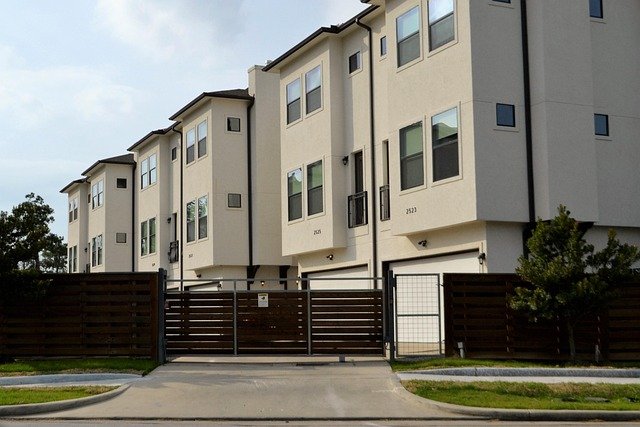The Emergence of Intergenerational Co-Living Spaces
Communal living reimagined: urban dwellers of all ages are embracing a new housing model that bridges generational divides. From millennials to retirees, diverse groups are finding harmony and mutual support in shared spaces designed to foster connection. Read below to explore how this trend is reshaping societal norms and challenging traditional notions of community.

The concept draws inspiration from historical multigenerational households while adapting to modern urban realities. It addresses several contemporary challenges, including social isolation, affordable housing shortages, and the desire for more sustainable living arrangements. By reimagining communal spaces and shared resources, these co-living environments offer a fresh alternative to conventional housing models.
Historical Context and Sociological Foundations
The roots of intergenerational living can be traced back to traditional extended family structures prevalent in many cultures. However, industrialization and urbanization in the 20th century led to a shift towards nuclear family units and age-segregated living arrangements. This transition resulted in increased independence but also contributed to social fragmentation and generational divides.
Sociologists have long studied the benefits of intergenerational interaction. Research shows that cross-generational relationships can improve mental health, reduce ageism, and enhance social cohesion. The current revival of intergenerational living in urban settings builds upon these findings, adapting them to address contemporary social challenges.
The Anatomy of Intergenerational Co-Living Spaces
Modern intergenerational co-living spaces are carefully designed to balance privacy and community. Typically, these arrangements feature private living quarters for individuals or small families, complemented by shared common areas that encourage interaction. These may include communal kitchens, lounges, gardens, and workspaces.
Architects and urban planners are increasingly incorporating elements that facilitate spontaneous encounters between residents. For example, centrally located staircases, strategically placed seating areas, and open-concept designs all contribute to creating opportunities for casual interaction. Some developments even include shared facilities like childcare centers or wellness spaces, further promoting intergenerational engagement.
Benefits and Challenges of Intergenerational Living
The advantages of intergenerational co-living are multifaceted. For younger residents, it offers mentorship opportunities, practical life skills, and a sense of extended family. Older individuals benefit from increased social interaction, opportunities to share their wisdom, and potential assistance with daily tasks. All age groups can enjoy reduced living costs, shared resources, and a diverse social network.
However, this living arrangement is not without its challenges. Conflicting lifestyles, differing expectations, and potential generational tensions require careful management. Successful intergenerational communities often implement clear communication strategies, conflict resolution mechanisms, and community guidelines to address these issues proactively.
Impact on Social Dynamics and Community Building
Intergenerational co-living spaces are reshaping social dynamics in urban areas. By bringing together diverse age groups, these communities are breaking down age-related stereotypes and fostering mutual understanding. This interaction has the potential to address issues like ageism and generational conflict on a broader societal level.
Moreover, these spaces are redefining the concept of community in urban settings. In an era where digital connections often supersede physical ones, intergenerational co-living offers a tangible, real-world community experience. This can lead to increased social capital, improved neighborhood cohesion, and a stronger sense of belonging among residents.
Economic and Environmental Considerations
From an economic perspective, intergenerational co-living presents an innovative solution to housing affordability issues in many urban areas. By sharing resources and space, residents can reduce their living costs while maintaining a high quality of life. This model also offers potential solutions for the underutilization of housing stock, particularly in areas with aging populations.
Environmentally, these living arrangements align with sustainable urban development goals. Shared resources and spaces typically result in reduced energy consumption and a smaller carbon footprint per resident. Some co-living communities also incorporate eco-friendly design features and promote sustainable lifestyle practices among their members.
Future Projections and Societal Implications
As urbanization continues and demographics shift, the intergenerational co-living model is poised for growth. Urban planners and policymakers are increasingly recognizing its potential to address multiple social and economic challenges simultaneously. This trend may lead to changes in zoning laws, building codes, and urban development strategies to accommodate and encourage such living arrangements.
The long-term societal implications of widespread intergenerational co-living could be profound. It has the potential to reshape family structures, redefine aging in place, and create new models of community care. As these communities evolve, they may also influence broader social policies related to housing, eldercare, and social services.
In conclusion, the emergence of intergenerational co-living spaces represents a significant shift in urban living paradigms. By fostering connections across age groups, these innovative communities are not just addressing housing needs but are actively reshaping social dynamics and challenging conventional notions of age-segregated living. As this trend continues to grow, it promises to play a crucial role in building more inclusive, sustainable, and socially cohesive urban environments for the future.





